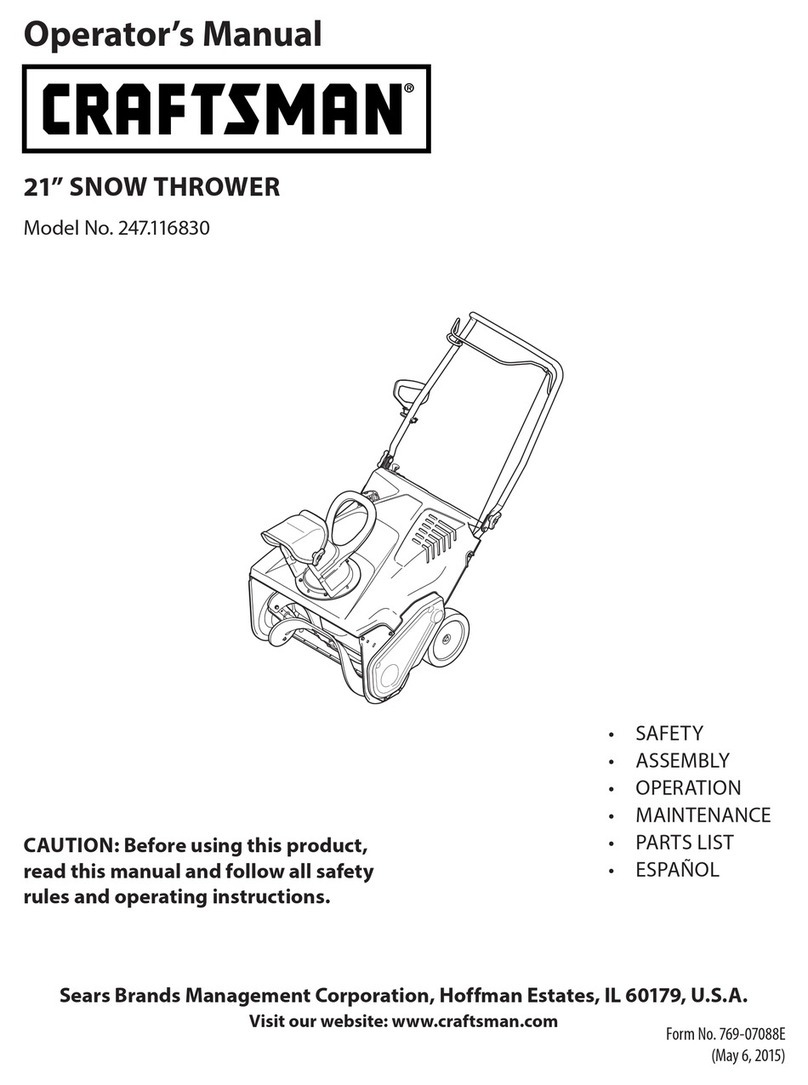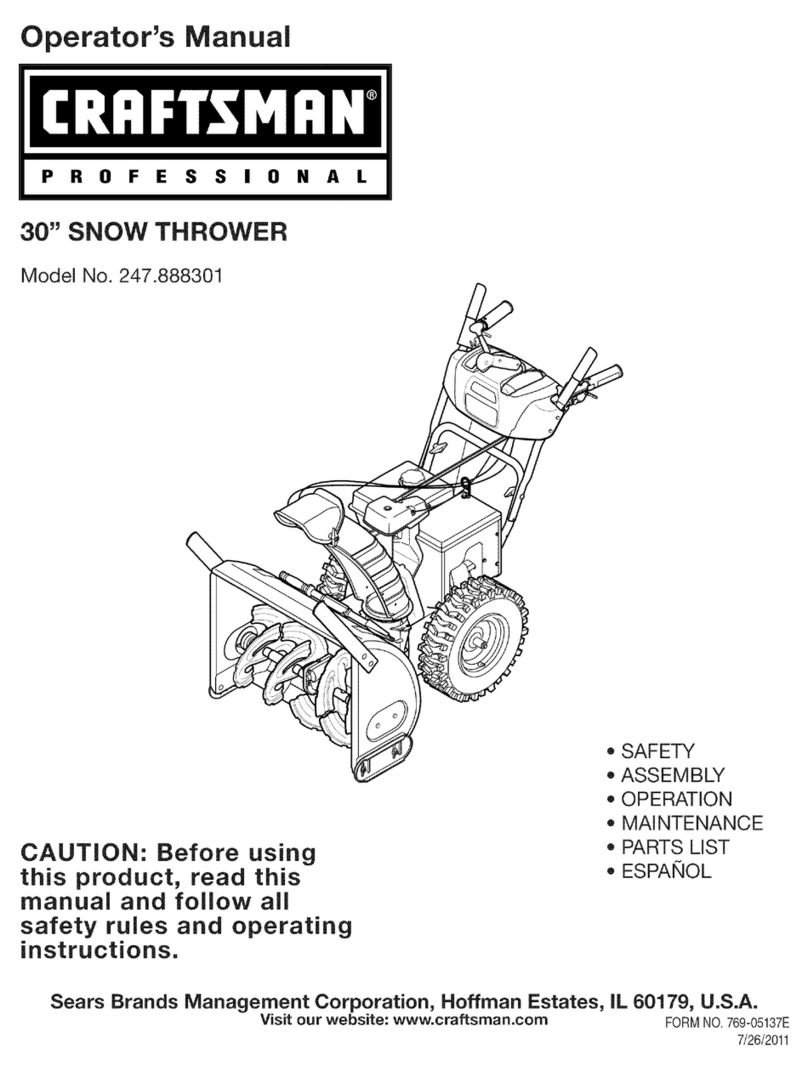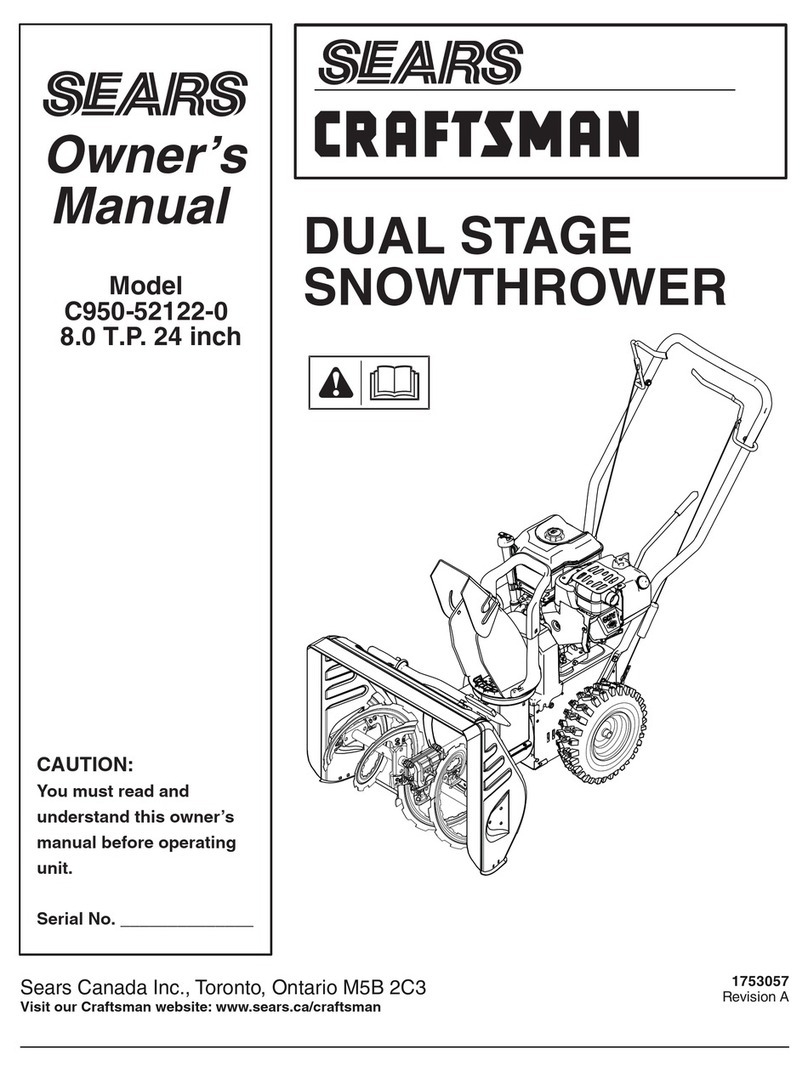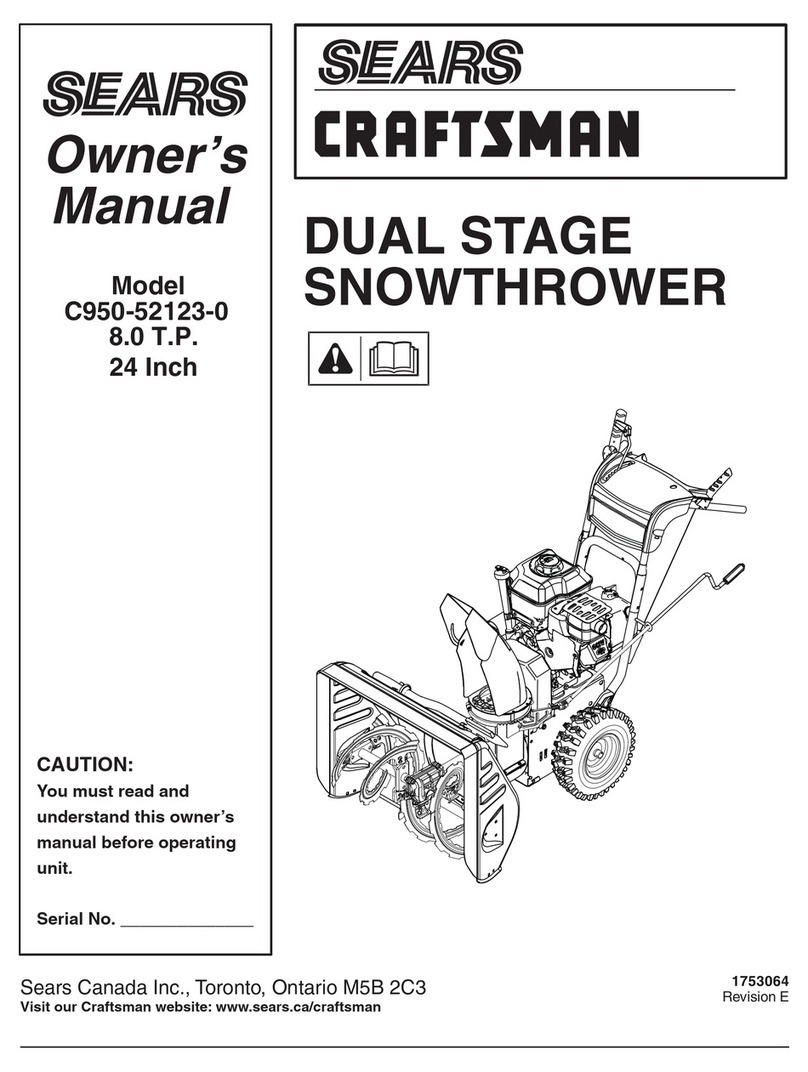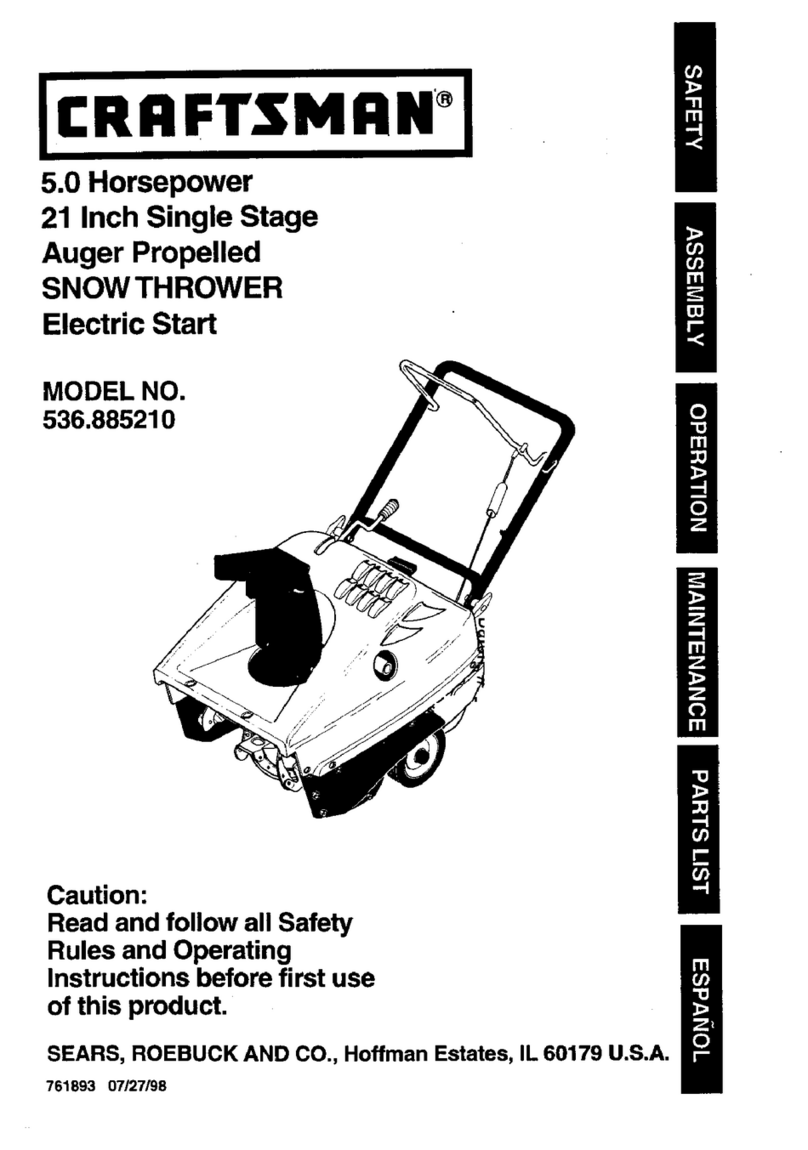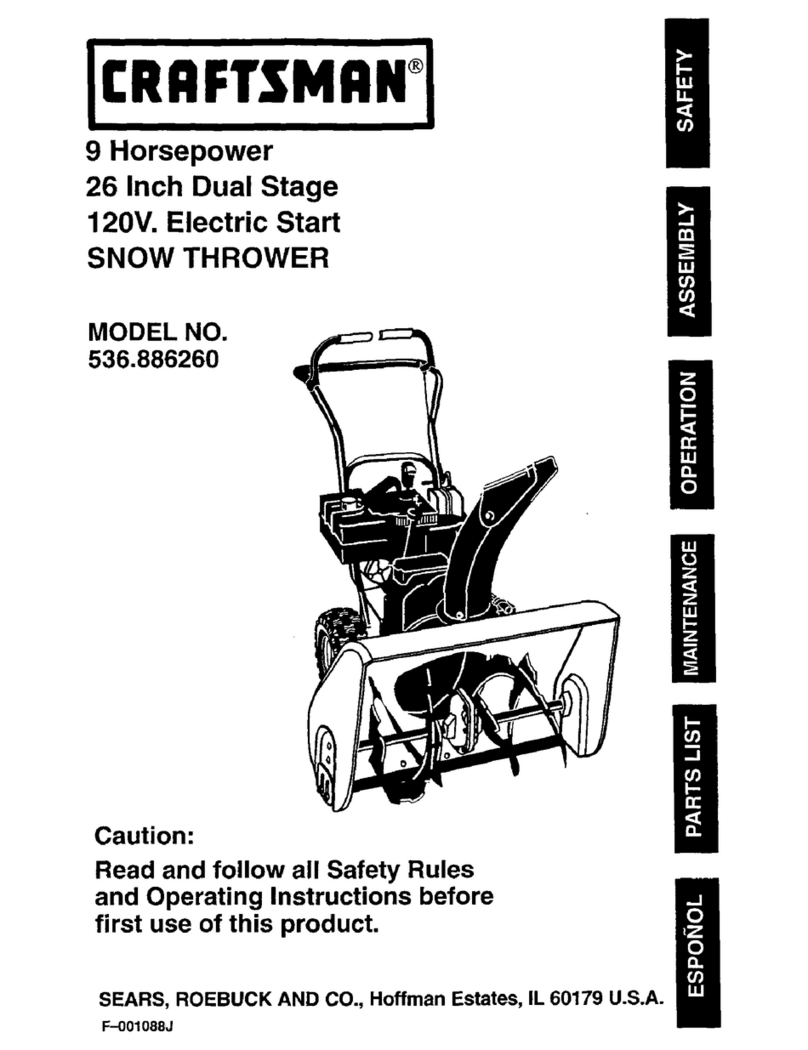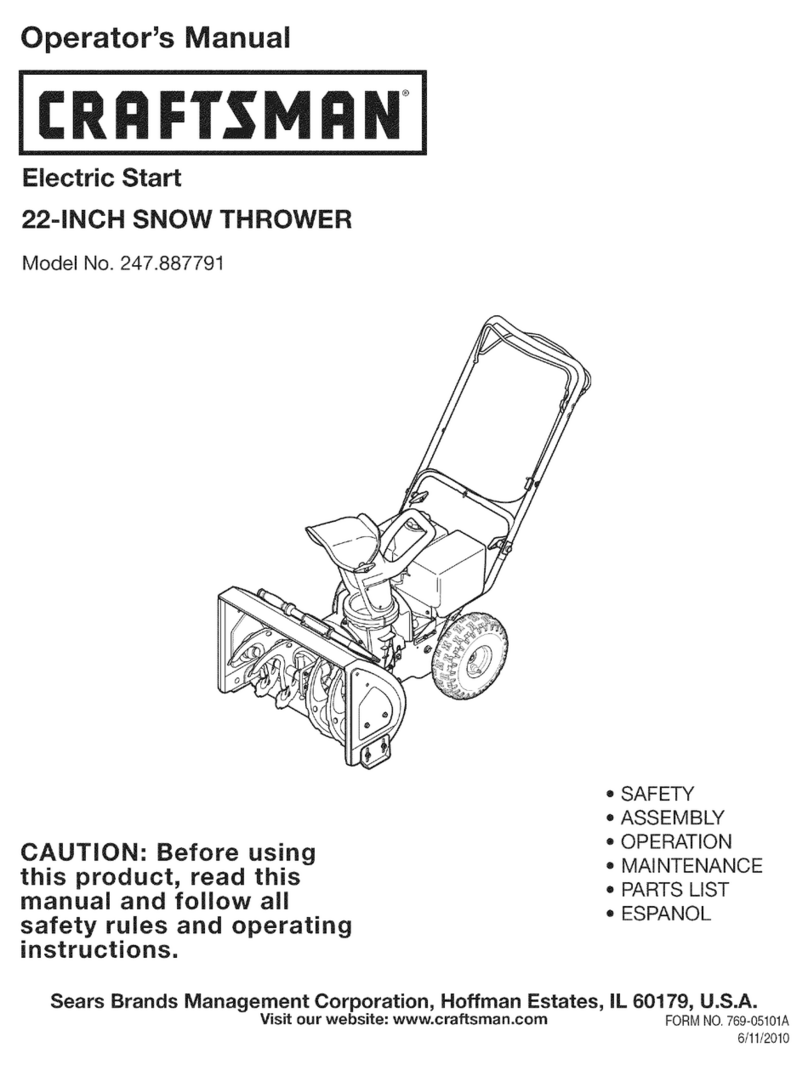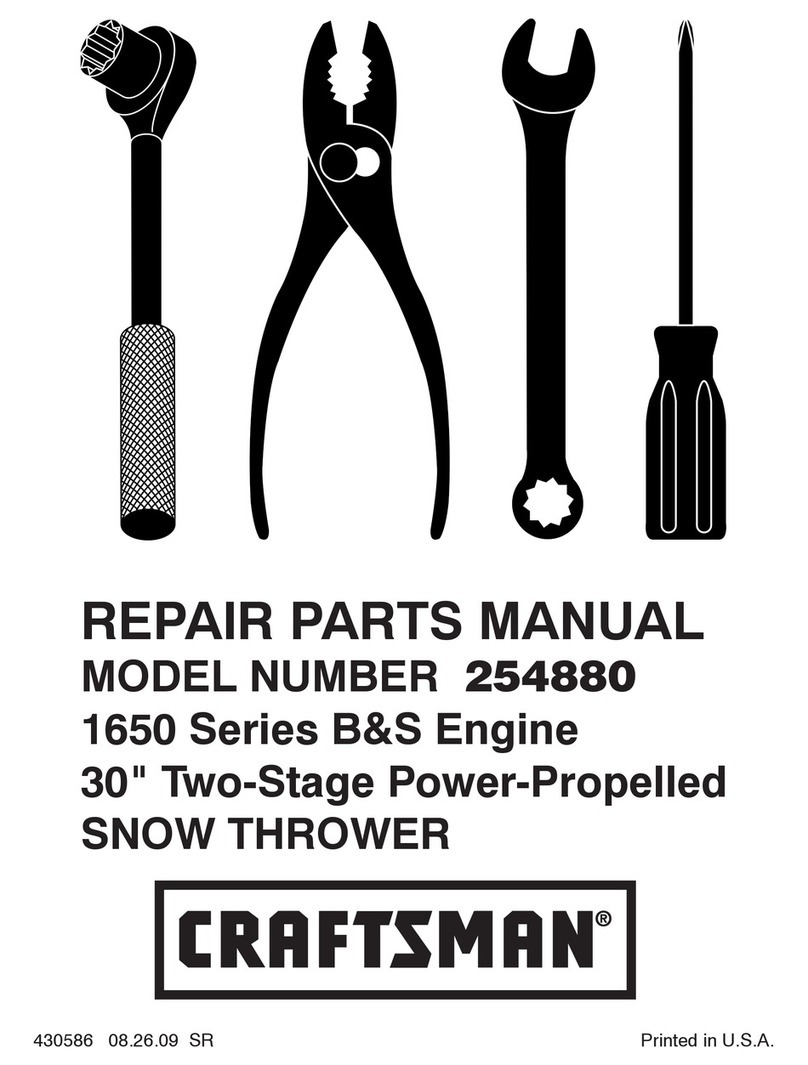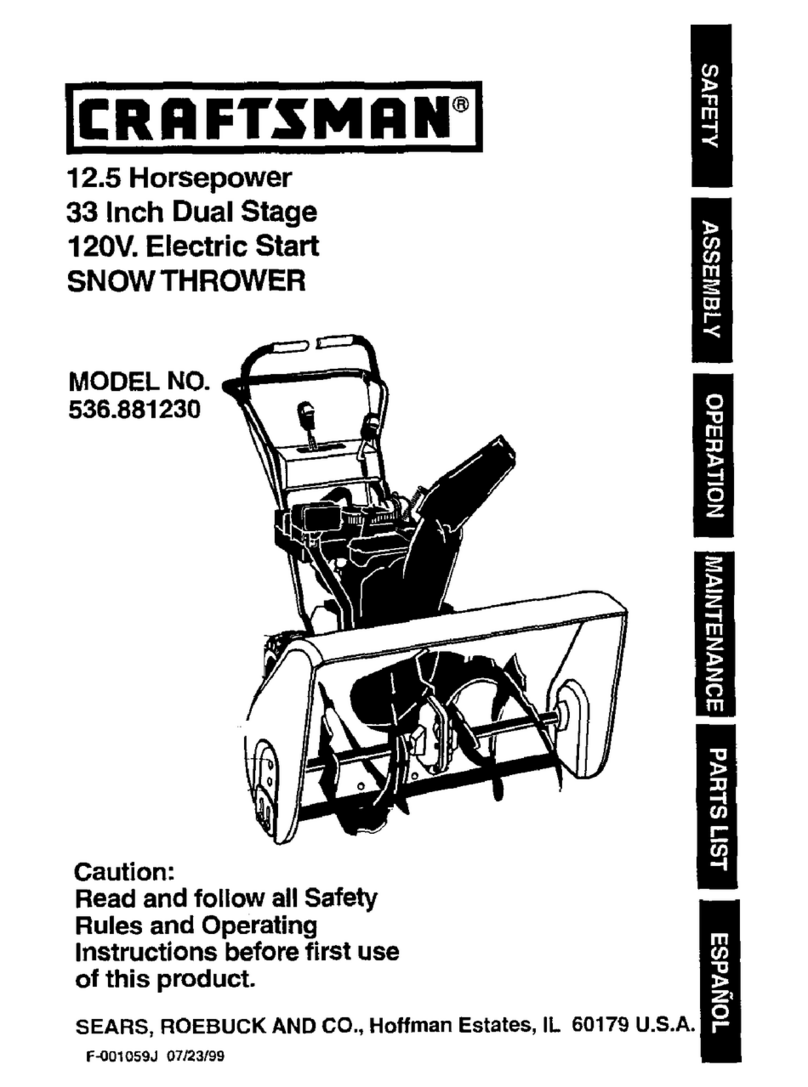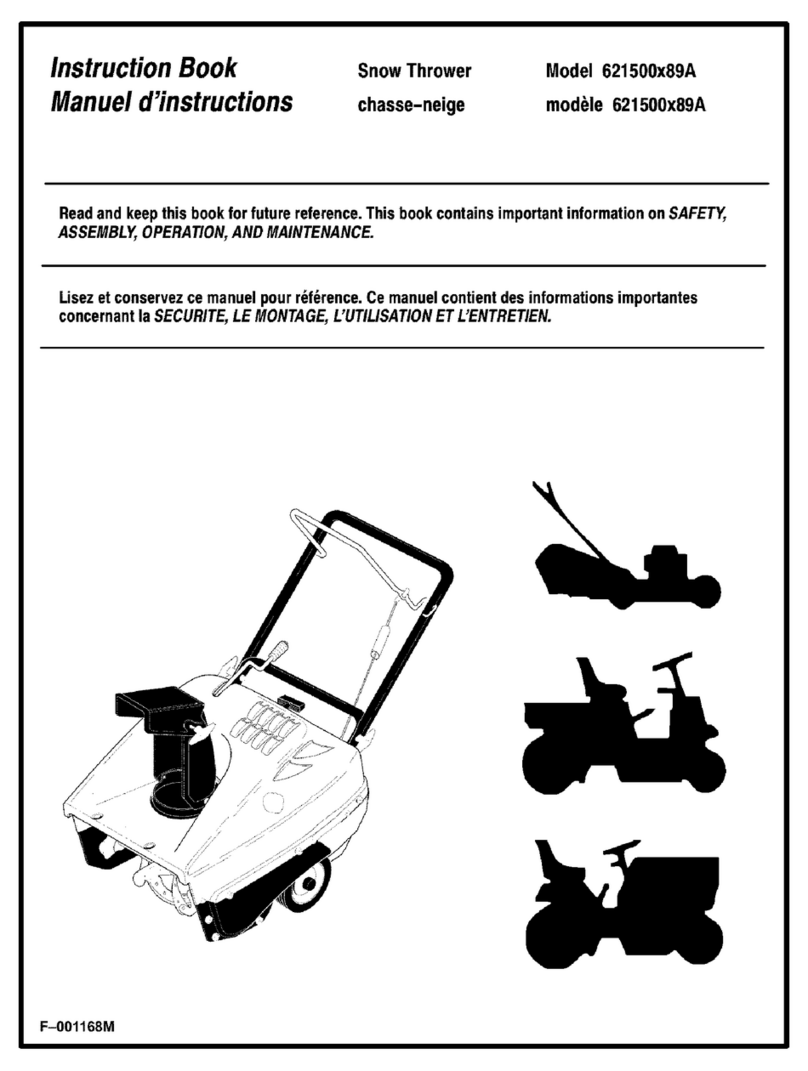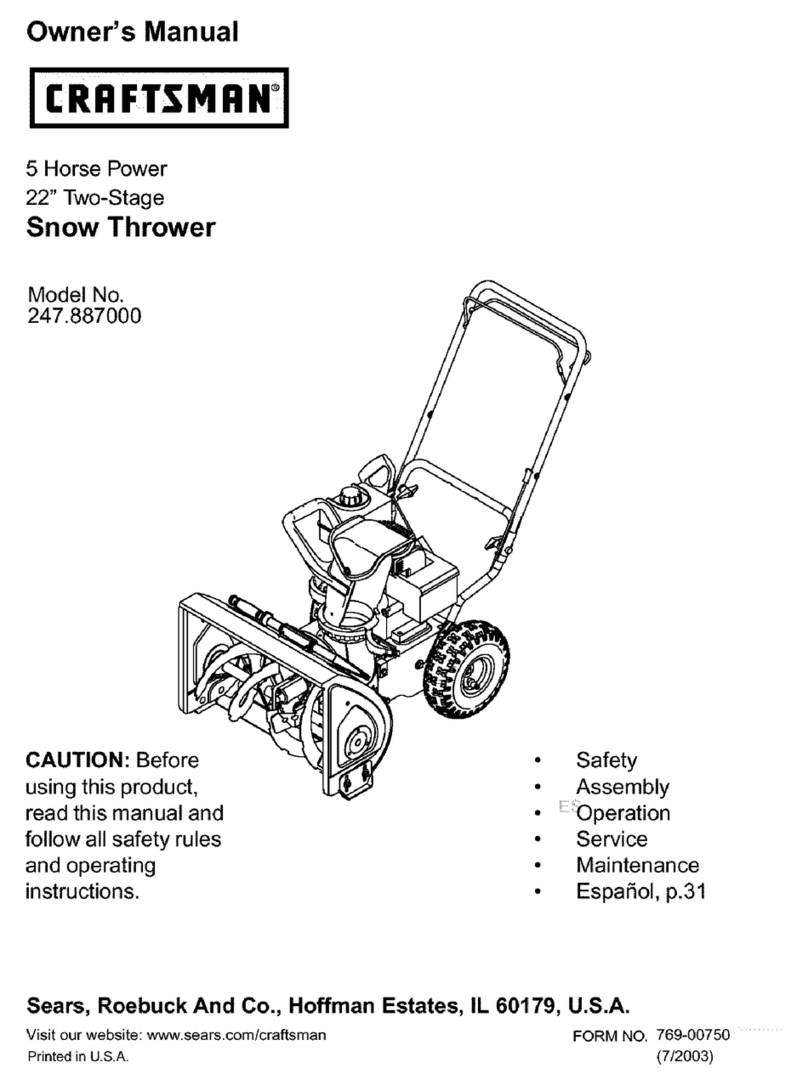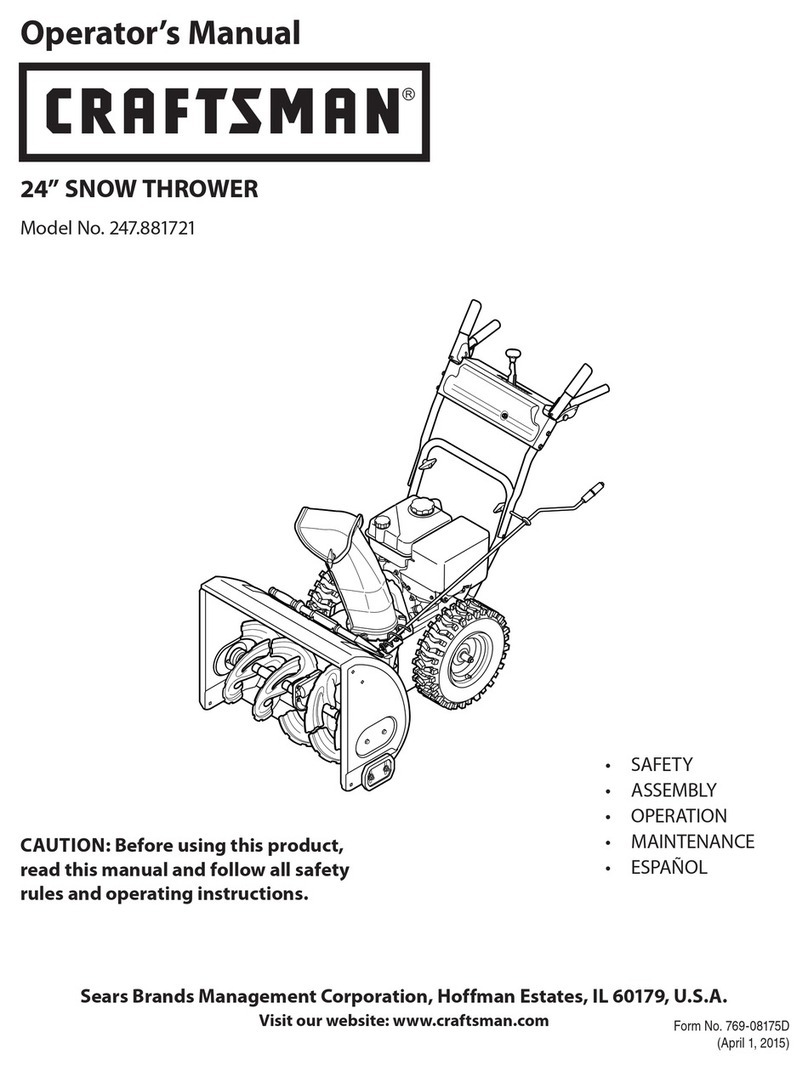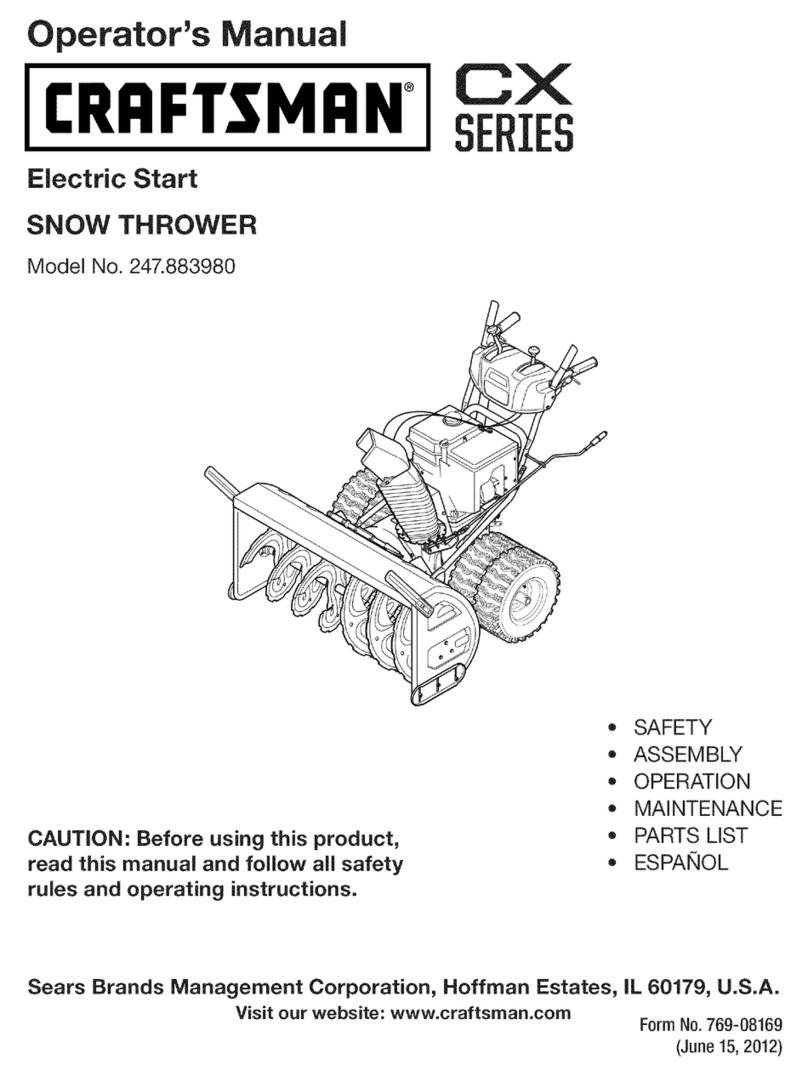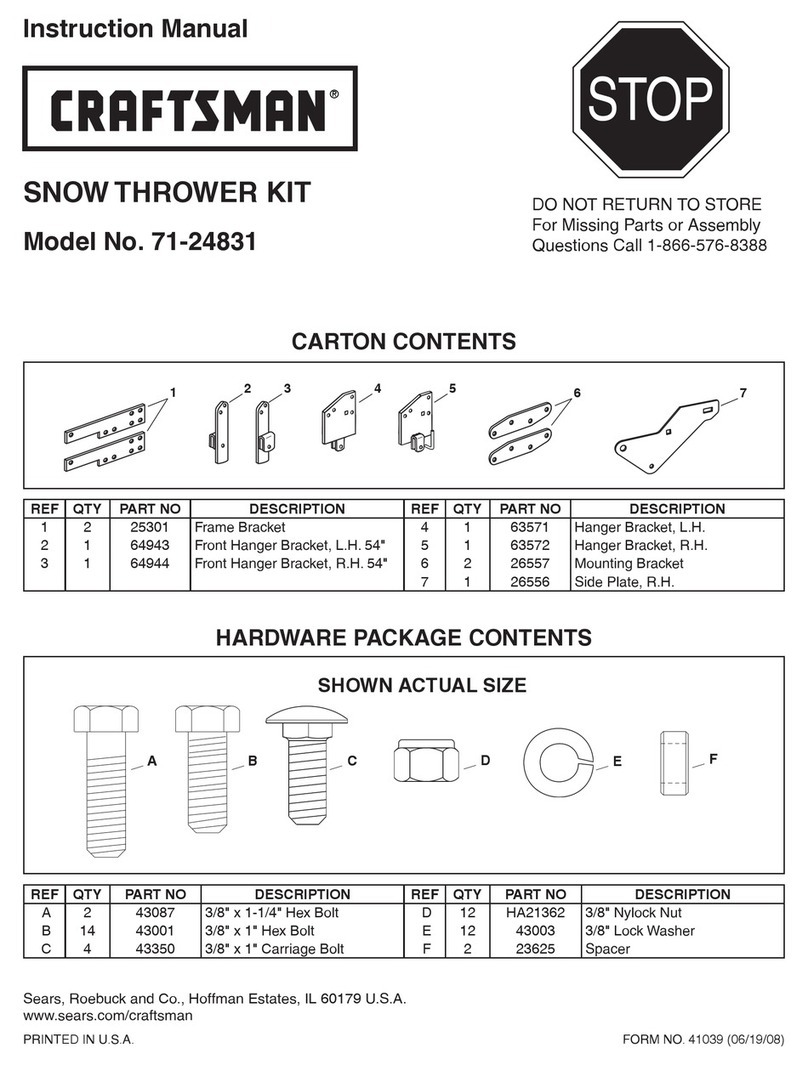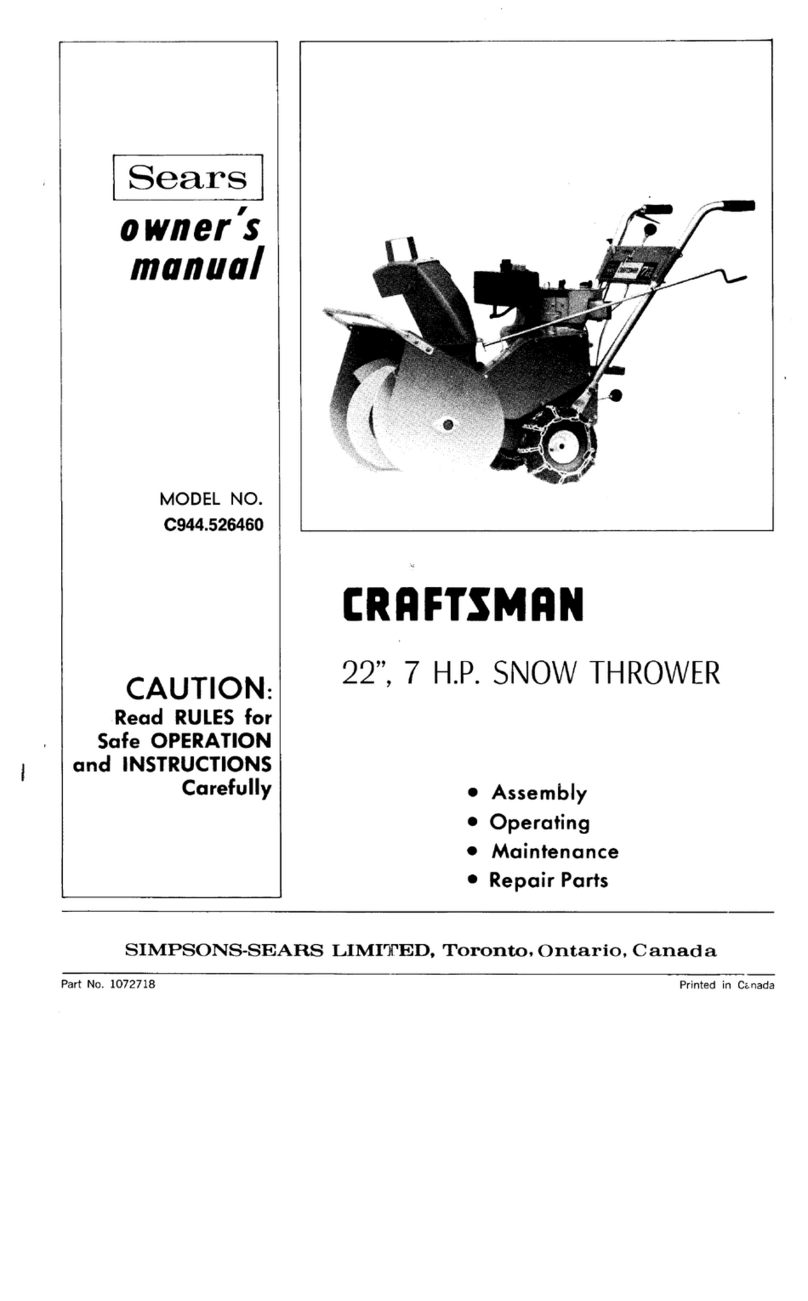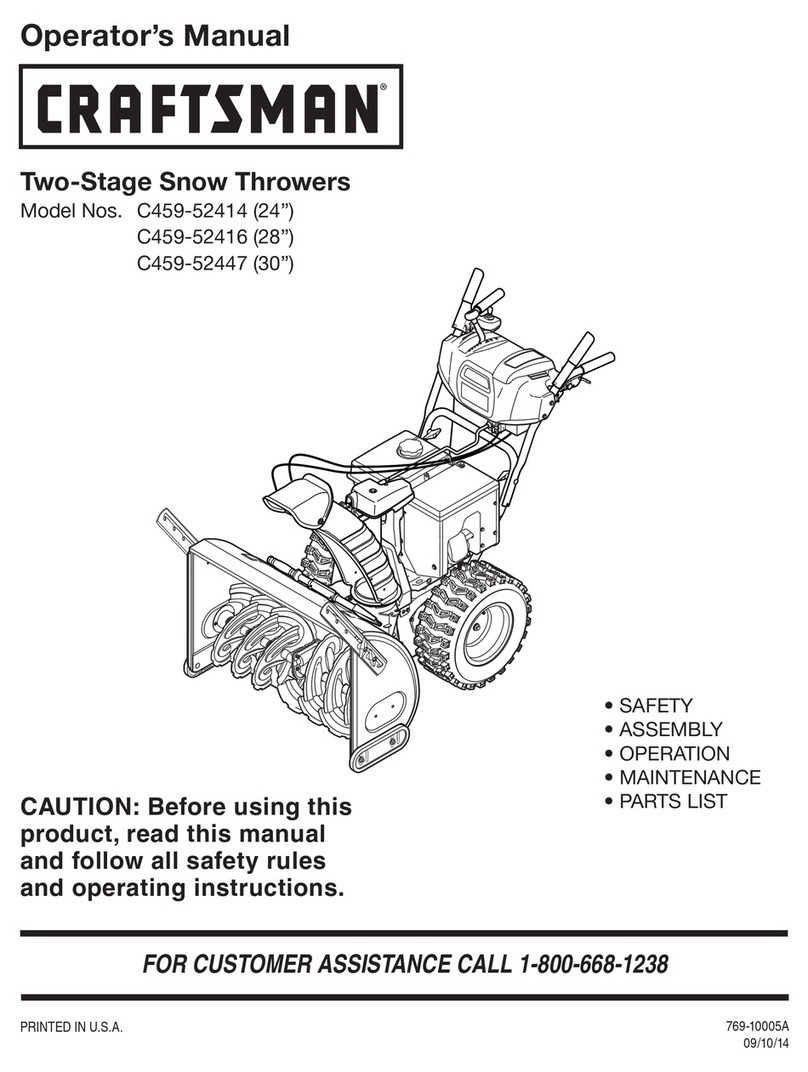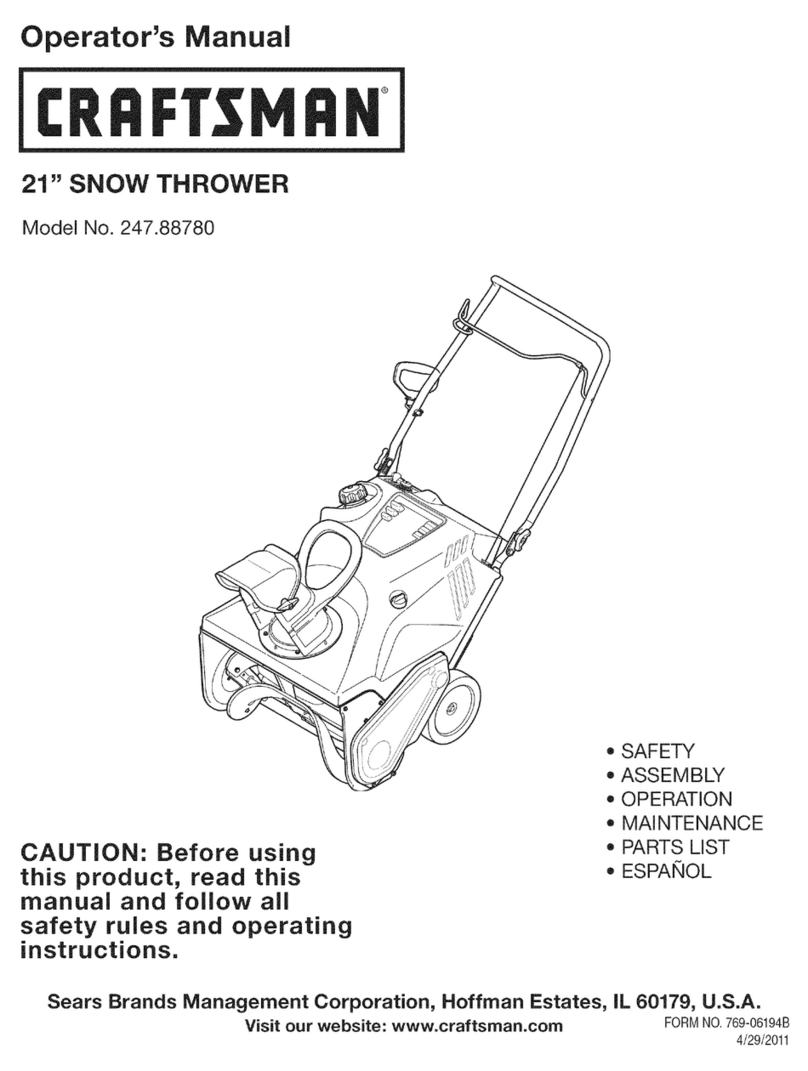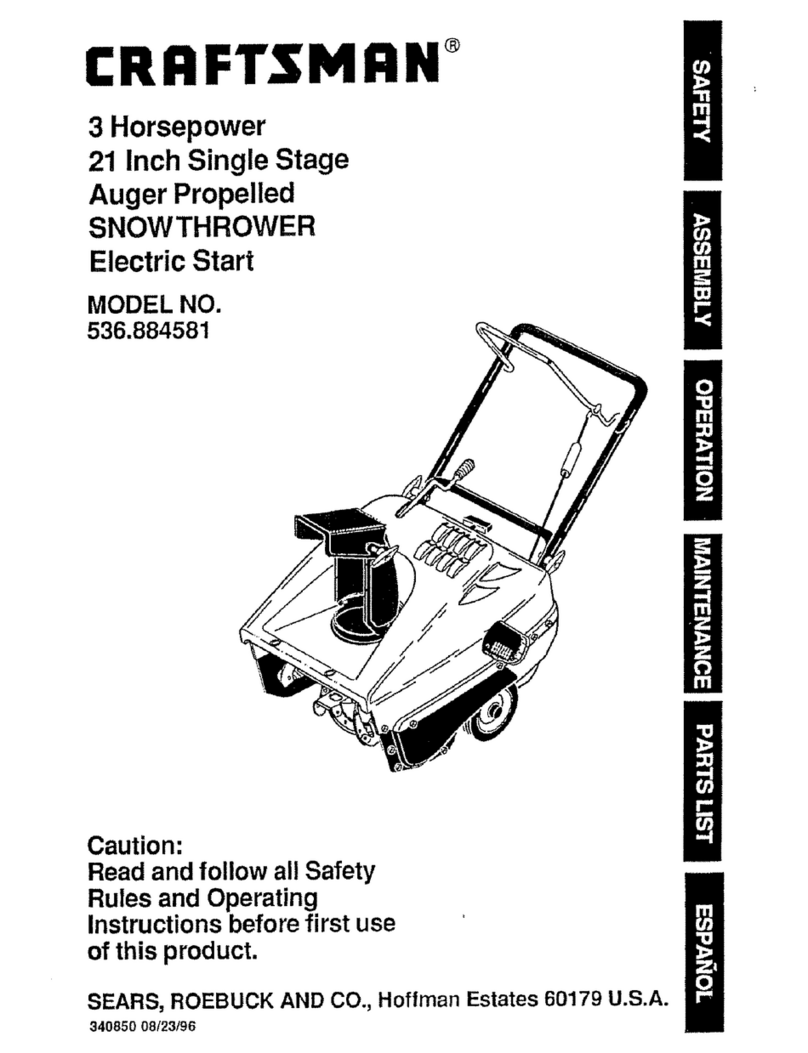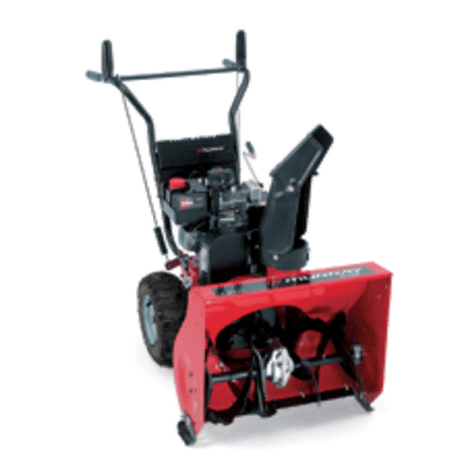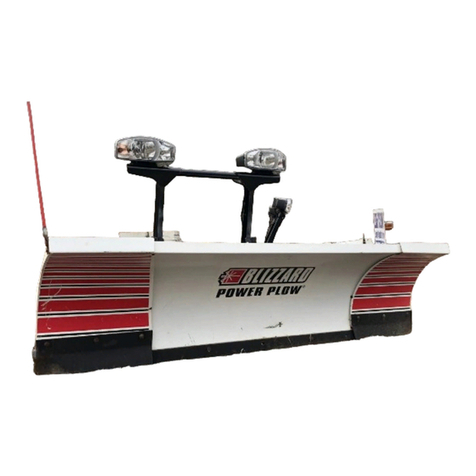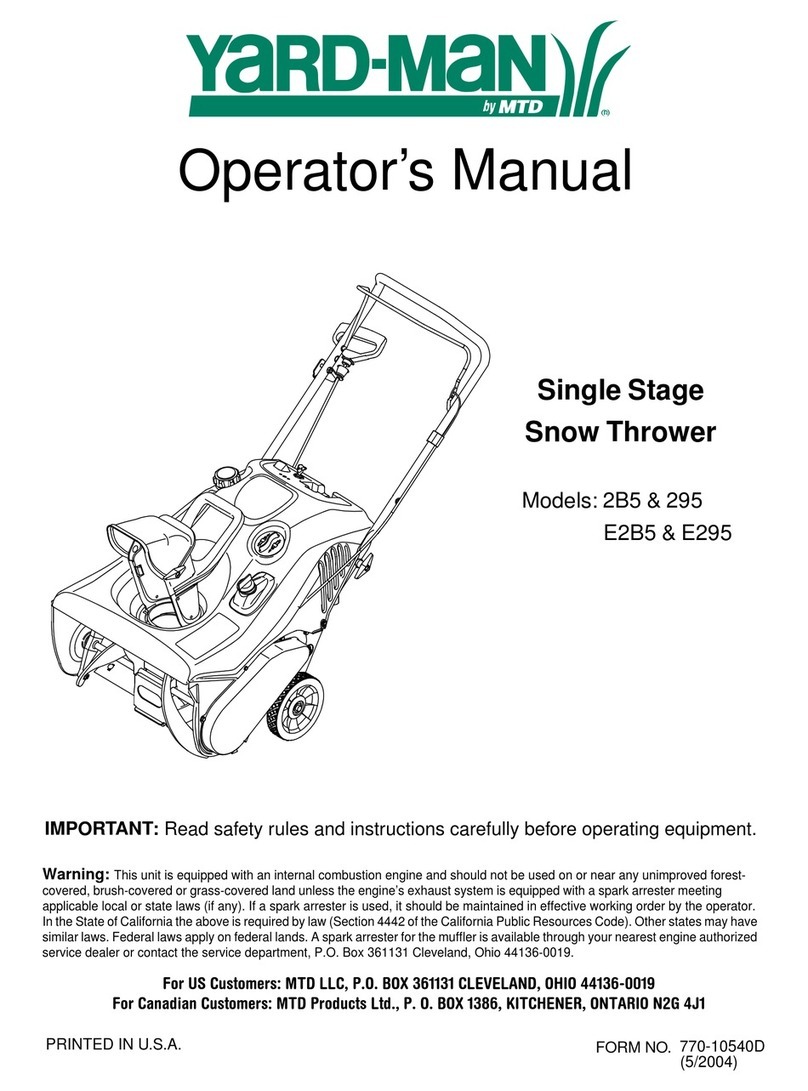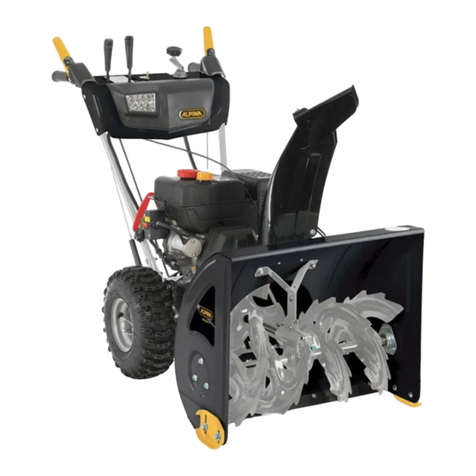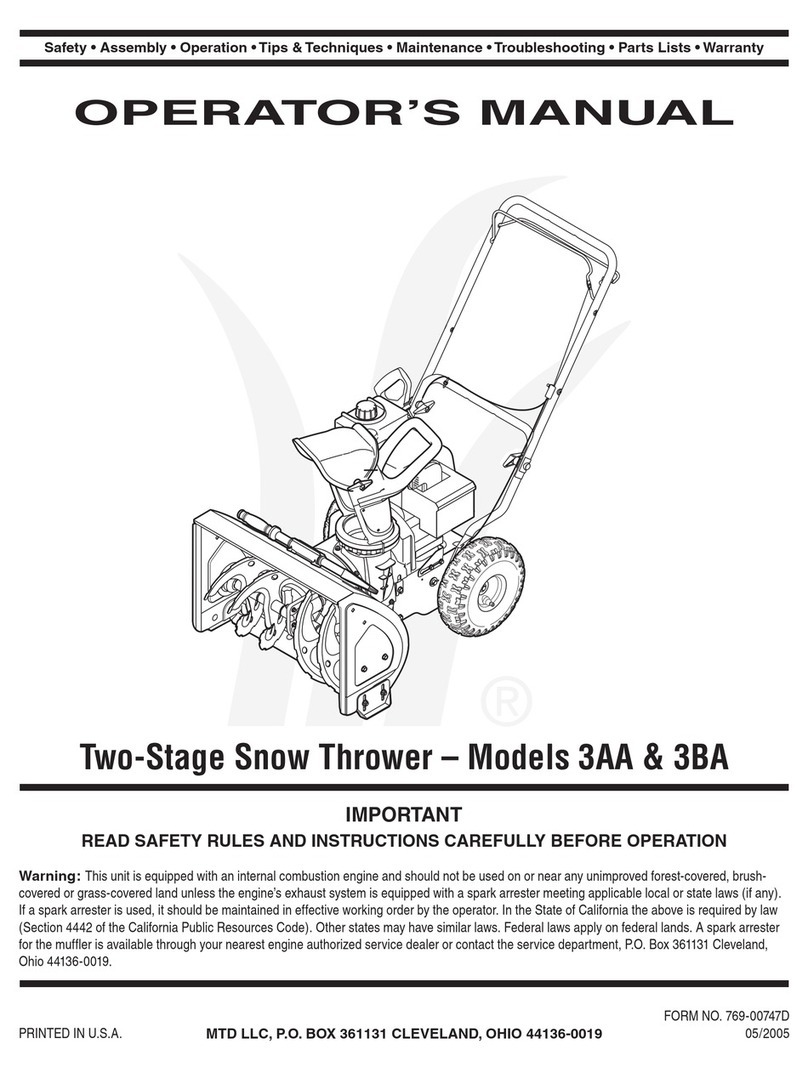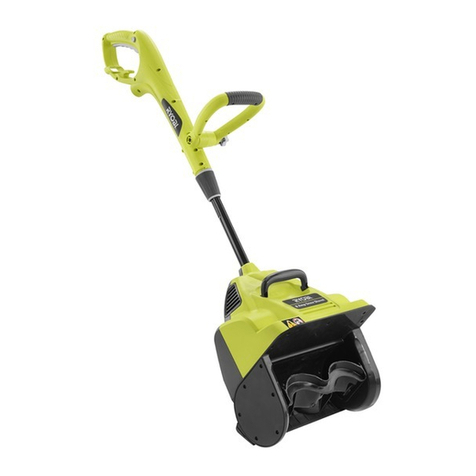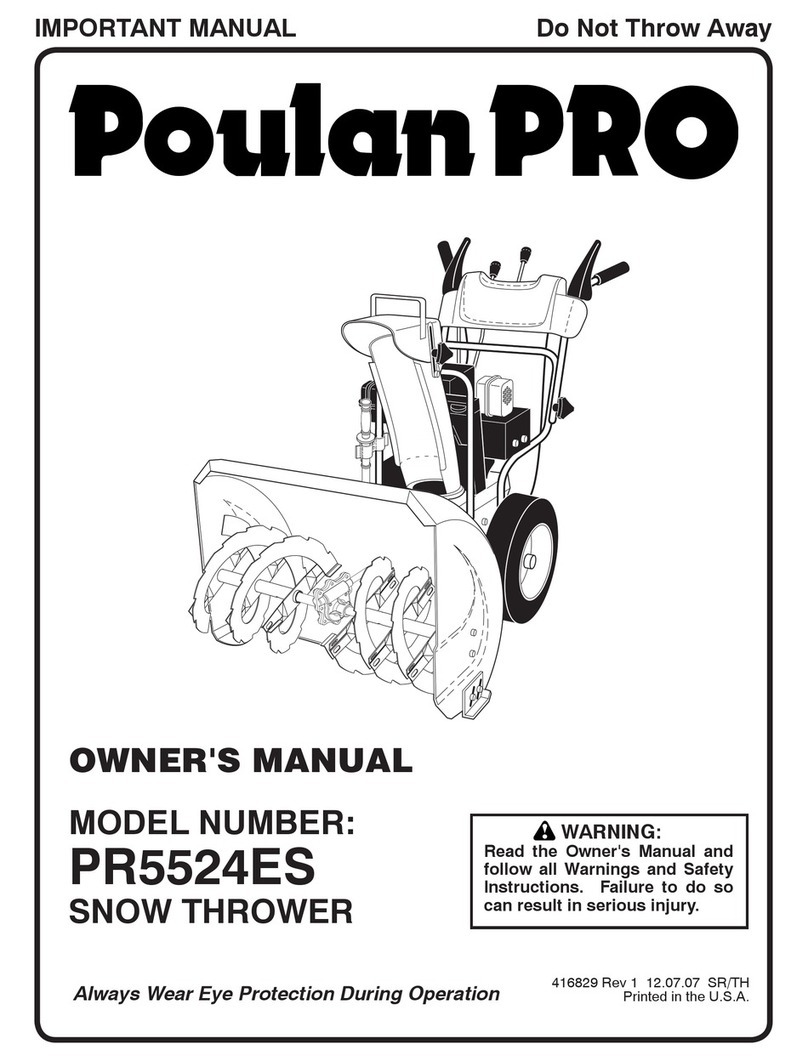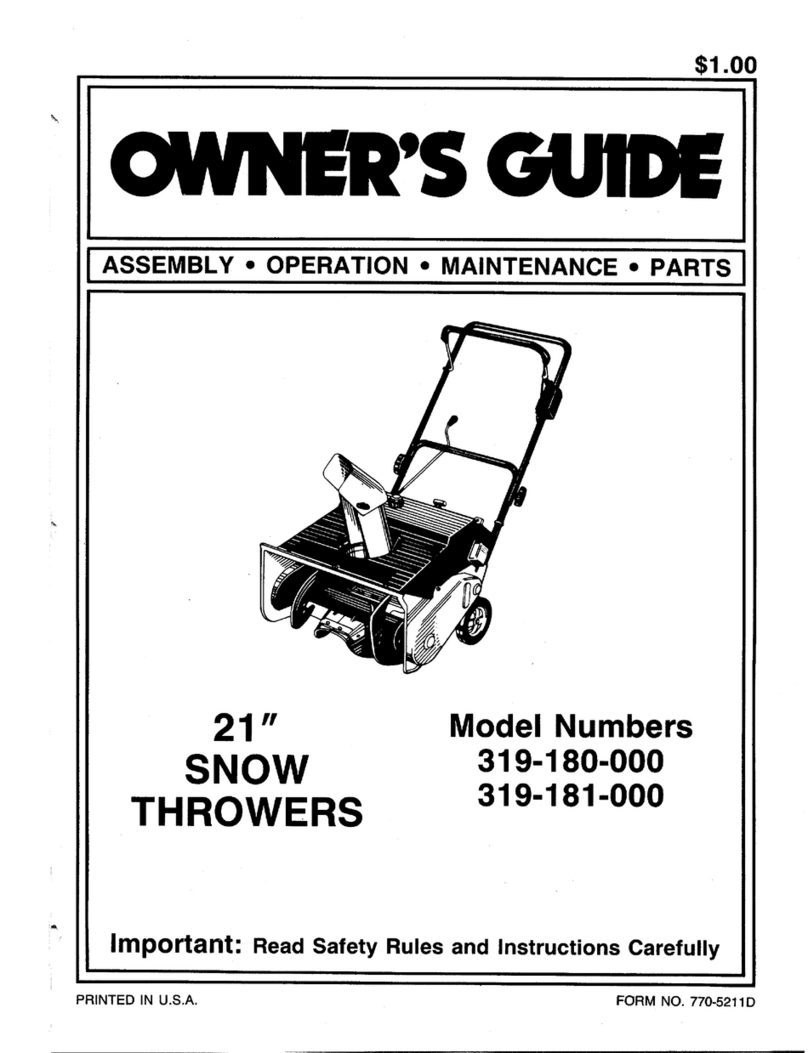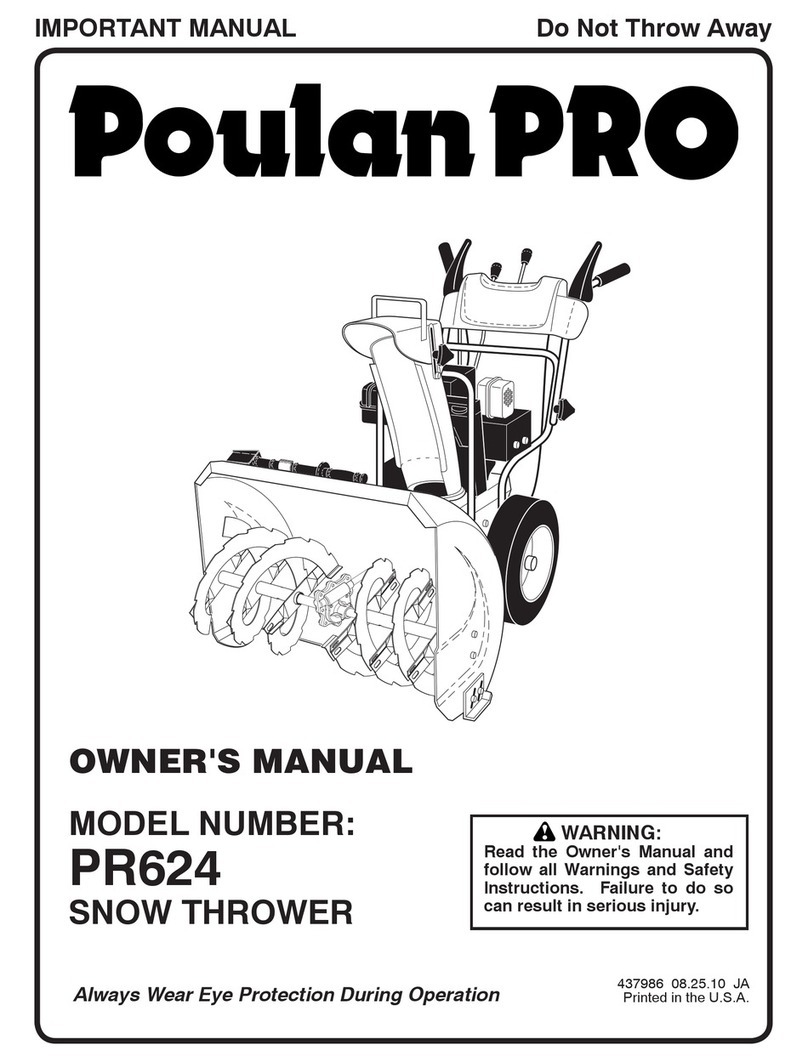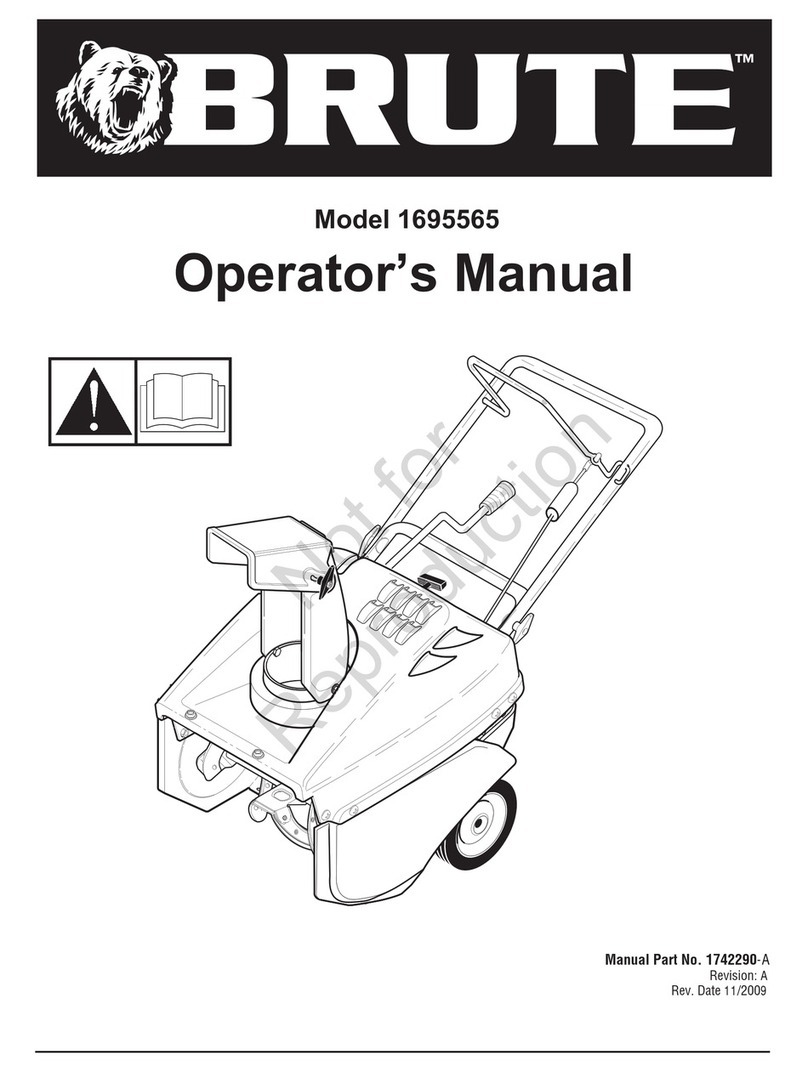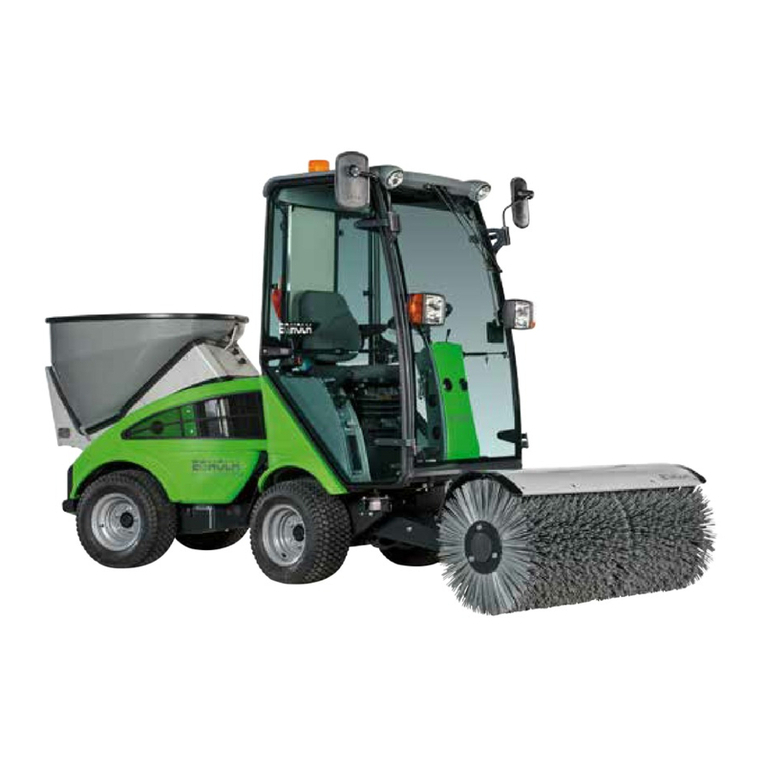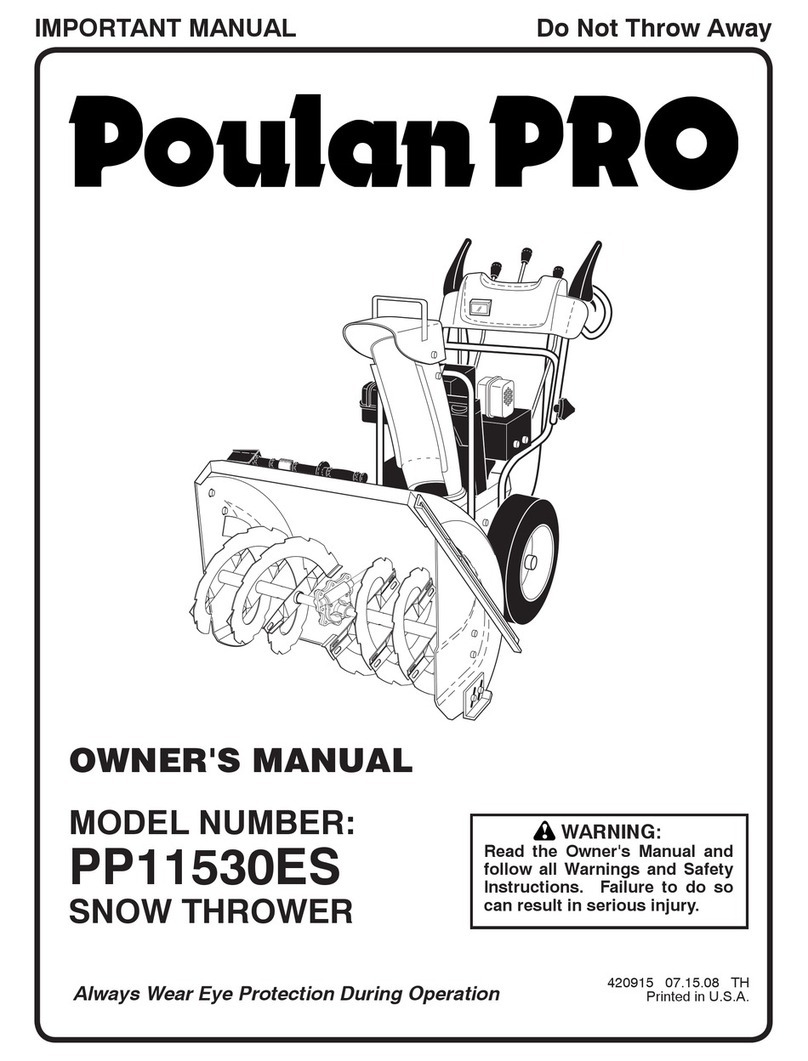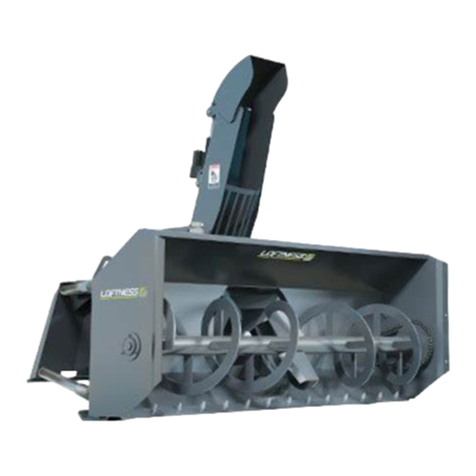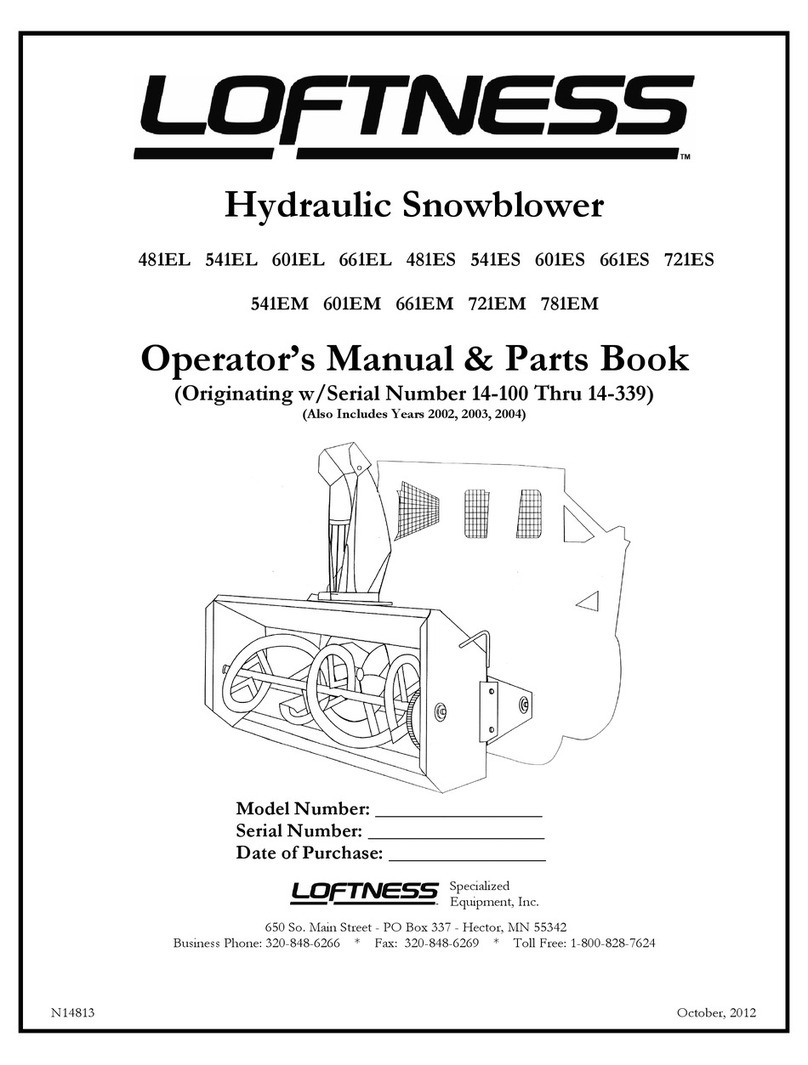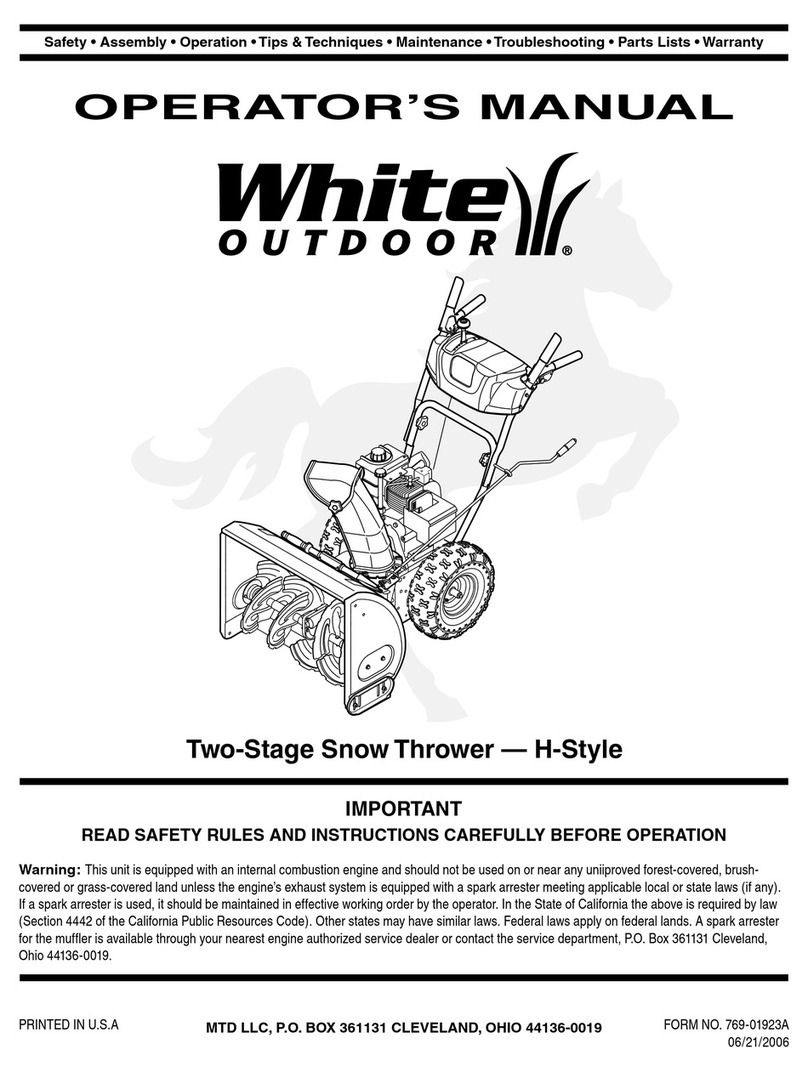^^\
Safe Operation Practices forWalk-Behind SnowUowers
DO
NOT
OPERATE
THIS
EQUIPMENT
BEFORE
READING
THIS
MANUAL
Training
1.
Read
the
operating
and
service
instruction
manual
care
fully. Be
thoroughly
familiar
with
the
controls
and
the
proper
use
of
the
equipment.
Know
how
to
stop
the
unit
and
disengage
the
controls
quickly.
2.
Never
allow
children
to
operate
the
equipment.
Never
allow
adults
to
operate
the
equipment
without
proper
instruction.
3. Keep
the
area
of
operation
clear
of all persons, particularly
small
children,
and
pets.
4.
Exercise
caution
to
avoid
slipping
or
falling,
especially
when
operating
in reverse.
Preparation
1.
Thoroughly
inspect
the
area
where
the
equipment
is to be
used
and
remove
all
doormats,
sleds,
boards,
wires,
and
other
foreign objects.
2. Disengageallclutches
and
shift into neutral before starting
the
engine
(motor).
3. Do not
operate
the
equipment
without wearing
adequate
winter
outer
garments.
Wear
footwear
that
will
improve
footing
on
slippery
surfaces.
4. Handle fuel with care; it is highly flammable.
(a)
Use
an
approved
fuel
container.
(b) Never add fuel to a running engine or hot engine.
(c) Fill fuel
tank
outdoors
with
extreme
care.
Never
fillfuel
tank
indoors.
(d) Replace gasoline cap securely and wipe up spilled fuel.
5. Use extension cords and receptacles as specified by the
manufacturer
for all
units
with
electric
drive
motors
or
elec
tric
starting
motors.
6. Adjust
the
collector
housing
height to
clear
gravel or
crushed
rock
surface.
7. Neverattempt to make any adjustments whilethe engine
(motor) is running (except when specifically recommend
ed
by
manufacturer).
8. Letengine (motor)and machine adjust to outdoor temper
atures
before starting to
clear
snow.
9. Alwayswearsafety glasses or eye shields during operation
or whileperforming an adjustment or repair to protect eyes
from foreign objectsthat may be thrown from the machine.
Operation
1. Donot put hands or feet near or under rotatingparts. Keep
clear of the discharge opening at all times.
2. Exerciseextreme caution when operating on or crossing
gravel drives, walks, or roads. Stayalert for hidden hazards
or
traffic.
3. After striking a foreign object,
stop
the
engine
(motor),
remove
the
wire from
the
spark plug, disconnect the cord
on electric motors, thoroughly inspect snowblower for any
damage,
and
repair
the
damage
before restarting
and
operating
the
snowblower.
4. If
the
unit
should
start
to vibrate abnormally,
stop
the
en
gine (motor)
and
check
immediately for
the
cause.
Vibra
tion is generally awarning of trouble.
5.
Stop
the
engine
(motor)
whenever
you
leave
the
operating
position, before
unclogging
the
collector/impeller housing
or
discharge
guide,
and
when
making
any
repairs, adjust
ments,
or
inspections.
6. When cleaning, repairing,
or
inspecting,
make
certain
the
collector/impeller
and
all moving
parts
have
stopped.
Dis
connect
the
spark
plug wire
and
keep
the
wire
away
from
the
plug to prevent
accidental
starting.
7. Do not run
the
engine
indoors,
except
when
starting
the
engine
and
for transporting
the
snowblower
in or
out
of
the
building.
Open
the
outside
doors;
exhaust
fumes
are
dangerous.
8. Do
not
clear
snow
across
the
face
of
slopes.
Exercise
extreme
caution
when
changing
direction
on
slopes.
Do
not
attempt
to
clear
steep
slopes.
9.
Never
operate
the
snowblower
without
proper
guards,
plates or
other
safety protective
devices
in place.
10.
Never
operate
the
snowblower
near
glass
enclosures,
automobiles,
window
wells, drop-offs,
and
the
like without
proper
adjustment
of
the
snow
discharge
angle.
Keep
children
and
pets
away.
11. Do not overload
the
machine
capacity
by
attempting
to
clear
snow
at
too
fast
a
rate.
12.
Never
operate
the
machine
at
high
transport
speeds
on
slippery surfaces. Look behind
and
use
care
when backing.
13. Never
direct
discharge
at
bystanders
or
allow
anyone
in
front
of
the
unit.
14.
Disengage
power
to
the
collector/impeller
when
snow
blower
is
transported
or
not
in
use.
15.
Use
only
attachments
and
accessories
approved
by
the
manufacturer of
the
snowblower (such as wheel weights,
counterweights,
cabs,
and
the
like).
16. Never
operate
the
snowblower
without
good
visibility or
light. Always be
sure
of your footing
and
keep a firm hold
on
the
handles
and
walk,
never
run.
17. Do not over-reach. Keep
proper
footing
and
balance
at all
times.
18. Do
not
attempt
to
use
snowblower
on
a roof.
Maintenance and Storage
1. Check
shear
bolts
and
other bolts at frequent intervals for
proper
tightness
to
be
sure
the
equipment
is in
safe
working
condition.
2.
Never
store
the
machine
with
fuel
in
the
tank
inside
a
building
where
ignition
sources
are
present
such
as
hot
water
and
space
heaters,
clothes
dryers,
and
the
like.Allow
the engine to cool before storing in
any
enclosure.
3. Alwaysrefer to operator's guide instructions for important
details
if
the
snowblower
is
to
be
stored
for
an
extended
period.
4.
Maintain
or
replace
safety
and
instruction
labels,
as
necessary.
5. Run
the
machine
a few
minutes
after
blowing
snow
to
prevent freeze-up of
the
collector/impeller.
